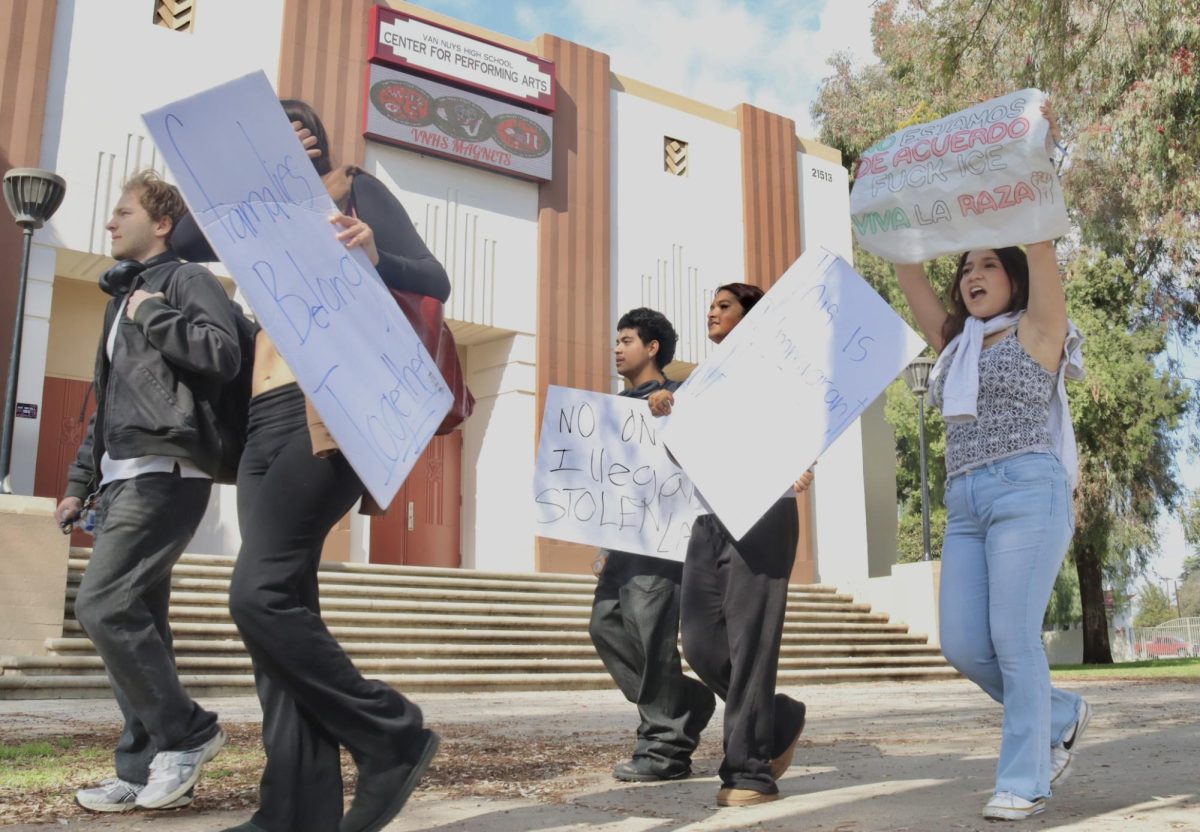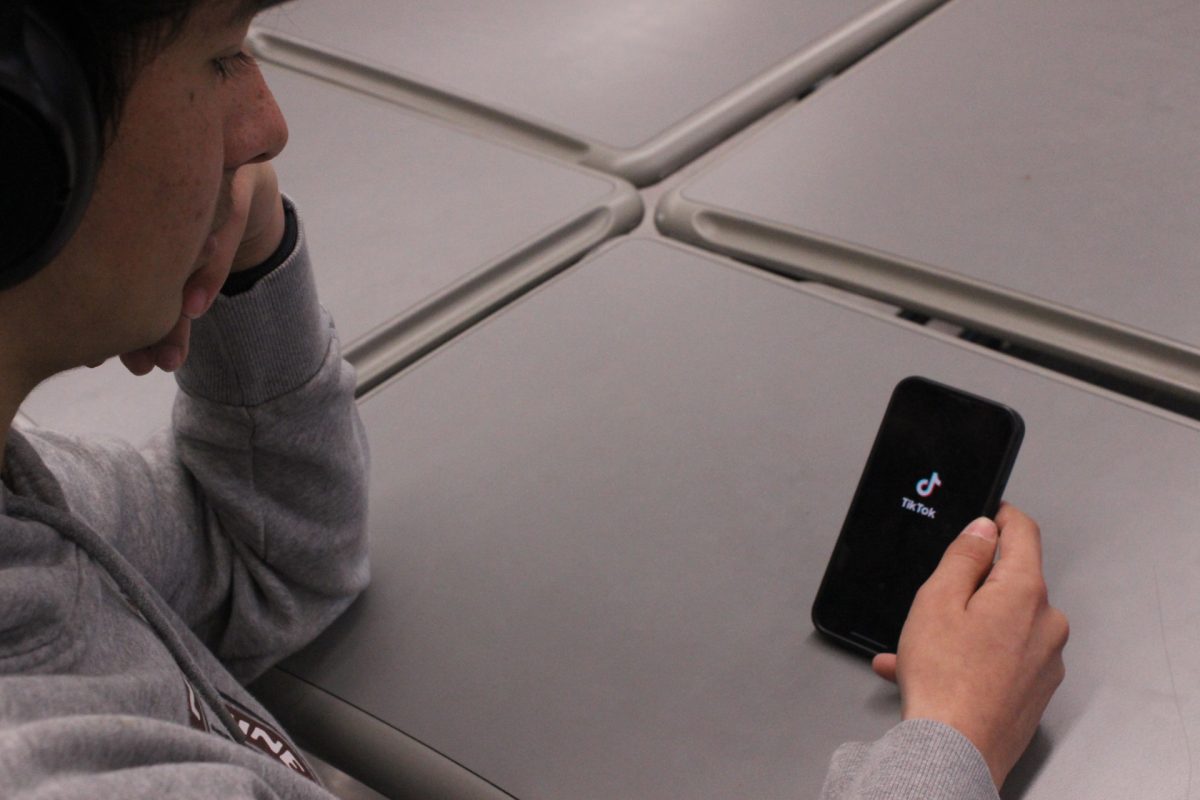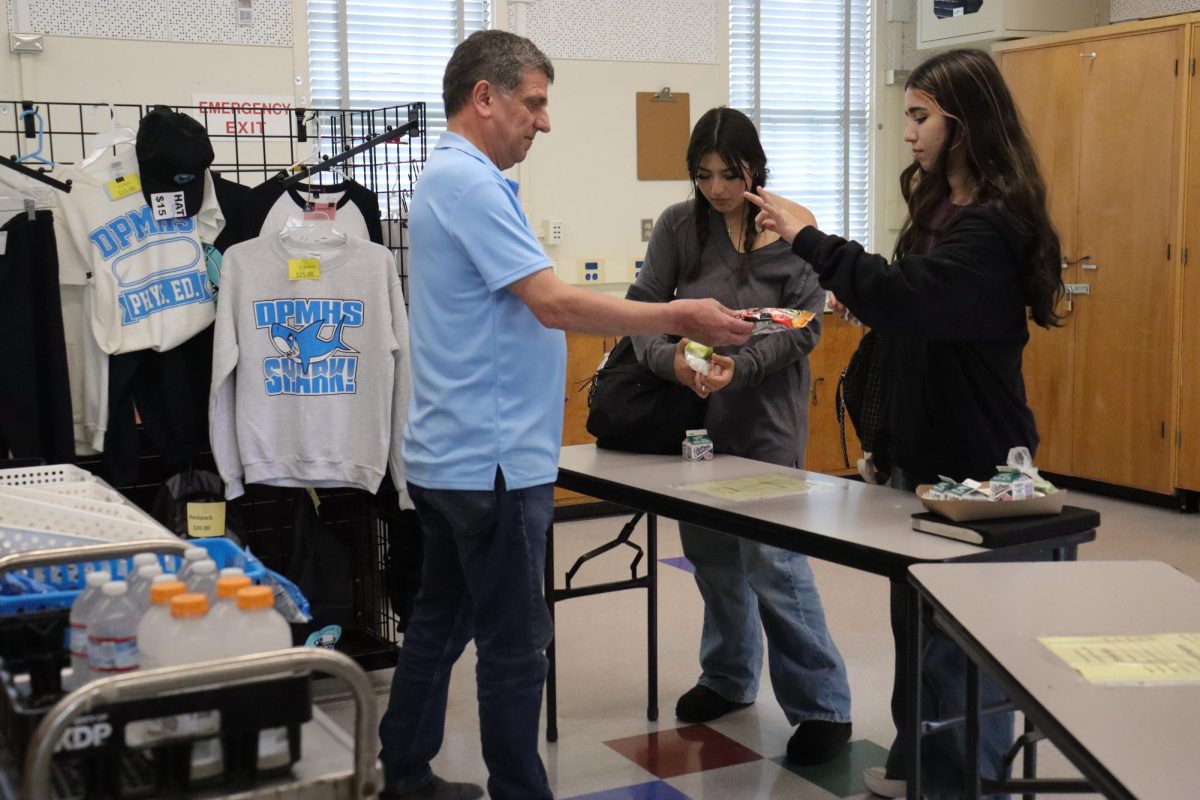Senior Isaac Herrera and his fellow classmates are diving into climate change and environmental science through dynamic, hands-on projects and experiments.
“We’re doing an ecosystem project right now where we have plastic bottles that we use to make three different chambers of ecosystems,” Herrera said.
Advanced Placement Environmental Science (APES) is one of six science classes offered to students, including biology, honors biology, honors chemistry, chemistry and physics. Students are required to have passed biology and chemistry before taking APES as a class. The year-long course focuses on climate change, the environment and the health of the Earth.
In order to better teach about the environment, teacher Ani Zohrabyan, who also teaches biology classes, has incorporated projects into the APES curriculum. These projects offer students an opportunity to learn through hands-on creations and dioramas about ecosystems and the lasting effects of climate change.
“As a student myself when I was going to school, I loved projects and more of the labs we did,” Zohrabyan said. “You’re able to see what is happening. Hands-on projects are the key to learning.”
Zohrabyan has conducted numerous hands-on projects across all of her classes, including strawberry DNA extractions and microscope cell labs in her biology periods. She has also planned more cell-based labs for her biology classes and a redwood lab for the APES class. One particular lab the APES class had required students to create ecosystems within a jar to sustain a fish. This taught the nutrition cycle and the importance of a balanced ecosystem. Students vouch for the effectiveness of her methods, like junior Kaleigh Tapaoan, who is in Zohrabyan’s Period 3 APES class.
“It helps me personally understand how to take care of not just one ecosystem but also being aware of the things outside of it,” Tapaoan said.
Multiple students in APES are also members of the Earth Club. Earth Club members collaborate to organize cleanups around the school as well as emphasizing the importance of habits to support environmental health, even on a small scale. Members of the club get opportunities to work hands-on with their own school ecosystem outside of the classroom.
“This year, we want to plant some new plants and hopefully get some help from Ms. Zohrabyan,” said senior Jennie Lopez, a two-year member of Earth Club. “So she could help us with that, she’s very good at that kind of stuff.”
Environmental awareness doesn’t just come from within school walls. Multiple students in APES, such as Herrera, are also volunteers at the Los Angeles Zoo Teen Council, a program that encourages high school students to build conservation and community-building skills.
“As an LA Zoo student council member, we talk about sustainability as well as representation in conservation attempts,” Herrera explained. “I feel like my work has put more emphasis on the environmental aspects of the world.”
As the effects of climate change continue to take their toll on the Earth’s environment, awareness around the topic becomes more important. Projects like these hands-on labs in AP Environmental Science help students become more familiar with a topic like climate change and declining biodiversity. A 2023 NASA study indicates that global warming has accelerated, with current temperatures being 1.2 degrees Celsius higher than they were recorded 40 years ago. Another study, conducted by the Cornell Chronicle, found that not only is climate change prevalent, but 99.9% of peer-reviewed scientific studies on climate change and global warming agree that it is caused by human activity. This differs from a 2013 paper that found only around 97% of studies at the time attributed climate change to human interference.
“We are virtually certain that the consensus is well over 99% now and that it’s pretty much case closed for any meaningful public conversation about the reality of human-caused climate change,” said Mark Lynas, the previous author of the 2013 paper. “It’s possible if we really, really were really stupid, to begin to extinct life on Earth completely.”
With the heat wave in Los Angeles just this past September, the erratic weather of recent has become more obvious. Incredibly hot summer and fall seasons in addition to freezing winter and spring seasons have had lasting effects on the environment, especially forests and other ecosystems susceptible to fires and extreme heat. The homeless population suffers from blistering afternoon temperatures and freezing nights across the country as well.
In order to raise awareness of rising temperatures and unpredictable weather, it has become increasingly important for students to learn about climate change and rising temperatures. Teachers like Zohrabyan, who incorporate not only climate change into their methods of teaching but also hands-on experiences, are vital to the future of the Earth’s sustainability. AP Environmental Science is a class that focuses on these topics of sustainability and environmental health through labs and projects to further student understanding of the subject. Students are gaining skills that could contribute to the future environmental sustainability of the Earth, and Zohrabyan is teaching them the importance of its health through projects and labs in APES.
“It’s important that we conserve what we have right now because in the future, it might be gone,” Tapaoan said.
















